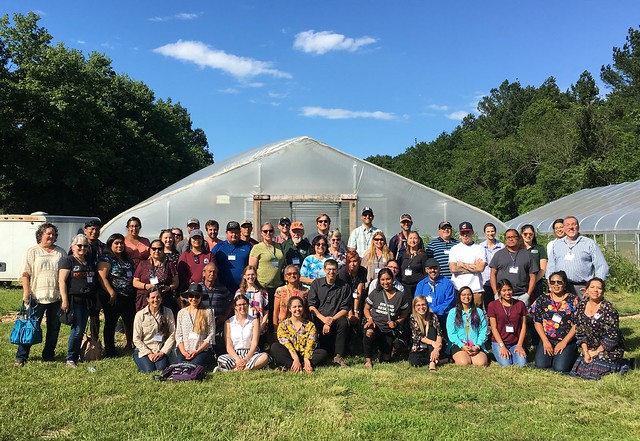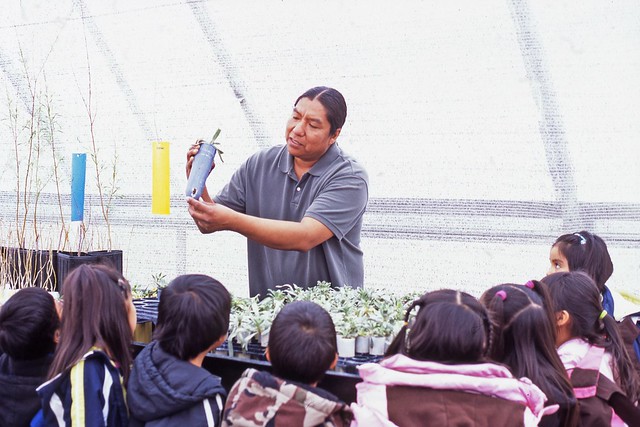
Numerous tribes throughout the US are growing native plants for reforestation and restoration. For many of them, however, there are deeper connections with the plants they’re propagating. Sure, the plants fulfill an ecological purpose for the projects they’re intended for, but often there are meaningful cultural connections as well. That is, seedlings intended for a restoration project may contain species of plants the tribe used traditionally.
It goes without saying that tribes have a rich history and intimate connection with the landscape. Traditionally, the land provided everything they needed to survive. Much of what they depended on were plants, and they used them for food, shelter, textiles, medicine and ceremony. To do this, they needed to be in tune with the seasons and use their traditional ecological knowledge to harvest and manage native plants in a sustainable manner.
Fast forward to current times and you’ll find that tribes are still in the native plant business, but some of the contemporary management objectives have changed. In the context of restoration and reforestation, native plants are being grown for wildlife habitat improvement, invasive species mitigation, bioengineering purposes, erosion control, and post-wildfire rehabilitation to name a few. All this with the added spin of keeping ties with the plant roots and how they were used traditionally. Consequently, projects confer additional tribal benefits that may include efforts to preserve culture, help educate, improve plant availability or provide economic benefit.

Many of the tribes that produce native plants are involved in the Intertribal Nursery Council. This group is a USDA Forest Service managed, tribally-guided, organization for advancing the interests of native peoples involved with plant production in nurseries. The group was originally formed at the request of tribes, with the intent of providing a platform where tribal nursery professionals could collectively share and learn information and meet annually, much like the other professional nursery associations already in the U.S. Again, the added twist is the infusion of traditional knowledge and experiences.
The Intertribal Nursery Council provides a unique opportunity for like-minded tribal (and non-tribal) practitioners to celebrate native plant propagation and use both from a management and cultural perspective. Activities are facilitated by the agency’s Reforestation, Nurseries, and Genetic Resources Team with the ultimate objective of deploying functional species on the landscape.


